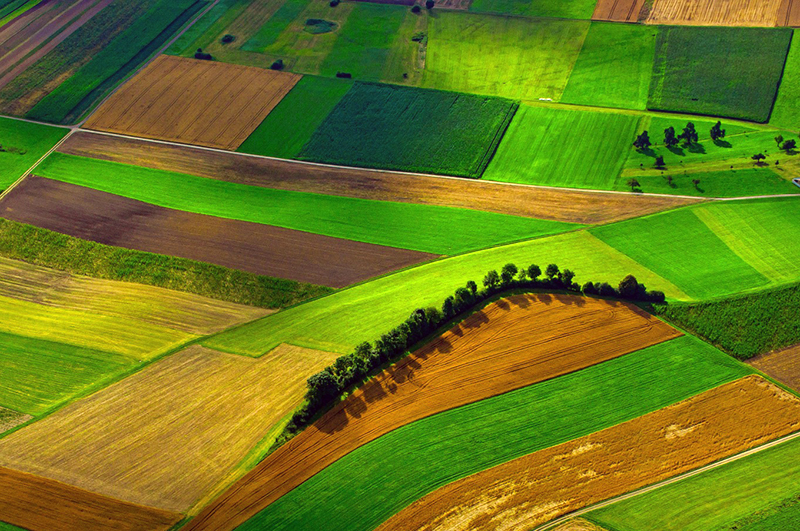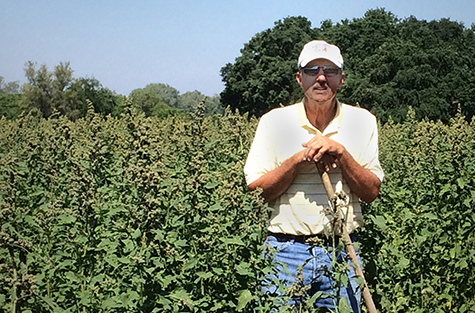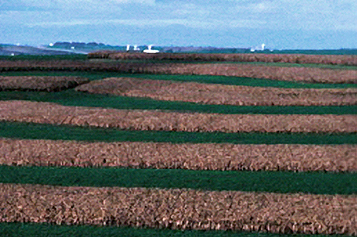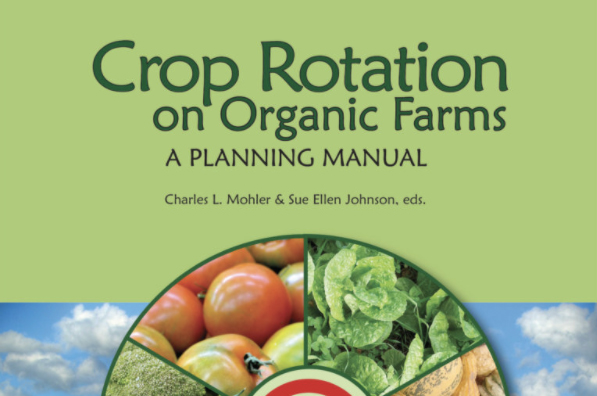
Crop Rotation

Because different crops have different nutritional needs and tend to be vulnerable to different diseases and pests, rotating what crops are grown in a specific location can reduce soil depletion and the need for as much pesticide and fertilizer use. When done correctly it can also reduce soil erosion, enhance biodiversity, and improve the quality as well as fertility of the soil. It also increases soil organic carbon. When combined with no-till or low-till practices, this can have a significant impact on carbon sequestration with positive impacts on reducing the rate of climate change.
Although the practice of crop rotation varies, the principles of crop rotation are universal: alternate crops with different characteristics. For example, one season you might plant crops that fix nitrogen in the soil; the next season plant crops that use a lot of nitrogen. You could also alternate sod-base crops with row crops, crops that attract certain insects with those that do not, or weed-suppressing plants with those that do not suppress weeds. Many farmers rotate several different crops in succession.

Download a printable fact sheet based on this page. (PDF)
Go to:
Mentor Farmers Who Share Experiences with Crop Rotation
 Phil Foster, Pinnacle Organically Grown Produce(opens in new window)
Phil Foster, Pinnacle Organically Grown Produce(opens in new window)
Greg Massa and Raquel Krach, Massa Organics(opens in new window)
Paul Muller, Full Belly Farm(opens in new window)
Scott Park, Park Farming Organics(opens in new window)
Videos
Conservation Crop Rotation
This NRCS video explores how Don Norwood of Mansfield, TN, is using crop rotation to improve his land by protecting its soil health.
Conservation Choices Practice Spotlight: Crop Rotations
This video from Iowa NRCS is about the benefits of using crop rotations and why they are an important conservation practice.
Science Literature
Bullock, D. G. (1992). "Crop rotation". Critical Reviews in Plant Sciences. 11 (4): 309–326. doi:10.1080/07352689209382349(opens in new window)
Mäder, P., Edenhofer, S., Boller, T. et al. Arbuscular mycorrhizae in a long-term field trial comparing low-input (organic, biological) and high-input (conventional) farming systems in a crop rotation(opens in new window). Biol Fertil Soils 31, 150–156 (2000). Division S‐6—Soil & Water Management & Conservation
Sherrod, L. A. ; Peterson, G. A.; Westfall, D. G.; and Ahuja, L. R. Cropping Intensity Enhances Soil Organic Carbon and Nitrogen in a No-Till Agroecosystem(opens in new window), Soil Science Society of America Journal, September, 2003
Triberti, Loretta; Anna Nastri & Guido Baldoni (2016). "Long-term effects of crop rotation, manure fertilization on carbon sequestration and soil fertility(opens in new window)". European Journal of Agronomy. 74: 47–55. doi:10.1016/j.eja.2015.11.024
Yang, X., Xiong, J., Du, T. et al. Diversifying crop rotation increases food production, reduces net greenhouse gas emissions and improves soil health.(opens in new window) Nat Commun 15, 198 (2024). https://doi.org/10.1038/s41467-023-44464-9


